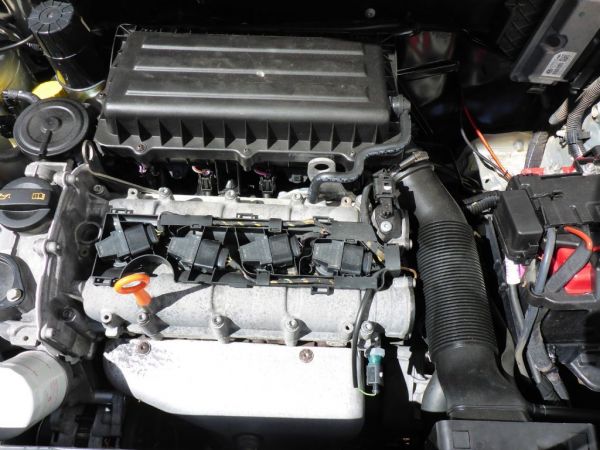Maintain long-term reliability with the right clp engine.
Wiki Article
Exactly How a Clp Engine Can Boost Effectiveness in Various Industries
The advent of CLP engines notes a substantial change in functional performance across different markets, driven by their capability to maximize fuel consumption and minimize downtime. Industries such as manufacturing and logistics stand to get significantly from their robust design and constant power outcome, which assure to simplify procedures and enhance efficiency. As companies progressively focus on sustainability together with efficiency, the function of CLP engines comes to be a lot more crucial. What continues to be to be seen is how these innovations will shape the future landscape of commercial procedures and their influence on broader economic patterns (clp engine).Summary of CLP Engines
CLP engines, or Constant Fluid Propellant engines, stand for a considerable advancement in propulsion innovation, especially for area applications. These engines utilize a continual feed system that permits the sustained expulsion of propellant, leading to improved performance and efficiency contrasted to standard solid or hybrid propulsion systems. By keeping a consistent flow of liquid propellant, CLP engines can accomplish extra accurate thrust control, which is critical for maneuvering spacecraft in numerous goal circumstances.The design of CLP engines incorporates advanced materials and ingenious fuel monitoring systems. clp engine. This leads to decreased weight and enhanced dependability, essential variables for long-duration room missions. Moreover, the constant operation reduces the risk of burning instability, an usual challenge in traditional rocket engines.

Benefits in Production
The manufacturing of Continuous Liquid Propellant (CLP) engines offers a number of significant benefits that boost both efficiency and cost-effectiveness. Among the primary advantages is the structured production process, which decreases the complexity connected with typical propulsion systems. By using liquid propellant, producers can achieve greater accuracy in engine efficiency, bring about enhanced energy output and minimized waste.In addition, CLP engines facilitate a greater level of modularity, permitting easier assimilation into different production lines. This versatility can substantially decrease preparations and improve total operational flexibility. Using CLP technology likewise tends to minimize the need for extensive upkeep as a result of fewer relocating components, which converts right into minimized downtime and functional expenses.

Applications in Logistics
Leveraging Constant Fluid Propellant (CLP) engines in logistics supplies substantial advantages in functional efficiency and dependability. These engines offer a durable remedy for various transport demands, making it possible for the seamless movement of goods across substantial distances. The intrinsic style of CLP engines enables constant power outcome, which translates into smoother and a lot more predictable transportation timetables.Among the vital applications of CLP engines in logistics remains in heavy-duty freight transport, where they can drive both ground and airborne automobiles. Their capacity to keep high performance under varying lots conditions makes sure that distribution timelines are satisfied, thereby improving client satisfaction. In addition, CLP engines can be incorporated into automated logistics systems, facilitating real-time monitoring and maximizing route planning.
Furthermore, the toughness of CLP engines minimizes upkeep downtime, enabling logistics firms to maximize their functional capacities. This is especially useful in warehousing operations, where effectiveness in taking care of and transferring goods is essential. As logistics remains to progress, the assimilation of CLP engines represents a forward-thinking method that not just enhances efficiency however likewise sustains the sector's expanding needs for dependability and speed.
Influence on Power Effectiveness
Exactly How do their explanation Continual Liquid Propellant (CLP) engines enhance power efficiency in transport? CLP engines make use of a Check Out Your URL consistent circulation of liquid gas, optimizing combustion procedures and preserving a secure drive output. This layout decreases power losses connected with conventional combustion engines, where gas delivery can differ and bring about inefficiencies.The continual operation of CLP engines permits a more reliable thermal cycle, leading to greater specific impulse compared to traditional engines. clp engine. This equates to reduced gas consumption for the same amount of work done, substantially reducing operational expenses across different transport sectors, including aviation and maritime markets
Moreover, the ability of CLP engines to preserve optimum performance under varying lots conditions minimizes the demand for constant acceleration and deceleration, additionally enhancing gas performance. Enhanced power performance not only adds to cost financial savings but also leads to reduce greenhouse gas exhausts, lining up with international sustainability goals.
Future Trends and Innovations
Arising improvements in Continuous Liquid Propellant (CLP) engine technology guarantee to transform the landscape of transport performance and sustainability. As industries pivot toward greener alternatives, CLP engines stand at the center, incorporating innovative materials and design methods that improve performance while reducing ecological impact.Among one of the most encouraging patterns is the adoption of crossbreed systems that incorporate CLP engines with renewable resource resources. This harmony can maximize gas consumption and minimize exhausts, lining up with global sustainability objectives. Innovations in computational liquid dynamics (CFD) are promoting the style of even more aerodynamically effective engines, leading to decreased drag and improved fuel our website effectiveness.
Furthermore, the growth of wise tracking systems is readied to enhance operational performances. These systems leverage data analytics and IoT innovation to optimize engine performance in real-time, guaranteeing that the engines operate within their most efficient parameters.
As study remains to check out alternative propellant solutions-- such as biofuels and artificial gas-- the future of CLP engines looks appealing. By utilizing these technologies, markets can not just improve their performance however also contribute significantly to a cleaner, extra lasting future in transportation.
Conclusion
In verdict, CLP engines represent a considerable development in efficiency across numerous markets. The combination of advanced materials and fewer moving parts minimizes maintenance demands, while positioning with sustainability objectives settings CLP engines as a critical innovation for the future.Report this wiki page